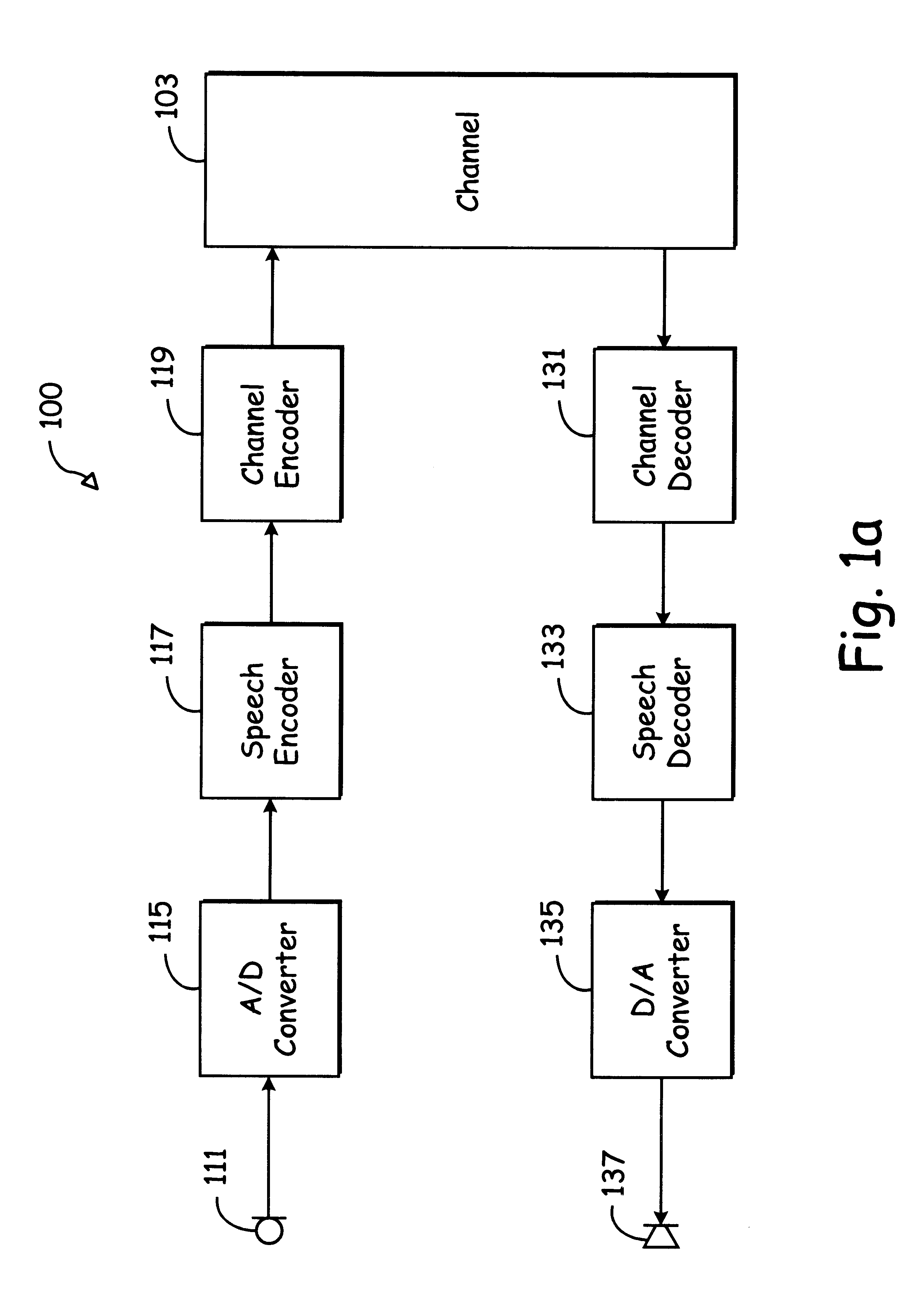Speech encoder adaptively applying pitch preprocessing with warping of target signal
a speech encoder and target signal technology, applied in the field of speech encoding and decoding, can solve the problems of many speech encoders not maximizing their inherent computational capacity in response to varying operating conditions, speech encoding is limited to a certain level of bandwidth, and speech encoding becomes increasingly difficult as data transmission bit rate decreases,
- Summary
- Abstract
- Description
- Claims
- Application Information
AI Technical Summary
Benefits of technology
Problems solved by technology
Method used
Image
Examples
Embodiment Construction
For purposes of this application, the following symbols, definitions and abbreviations apply.
adaptive codebook: The adaptive codebook contains excitation vectors that are adapted for every subframe. The adaptive codebook is derived from the long term filter state. The pitch lag value can be viewed as an index into the adaptive codebook.
adaptive postfilter: The adaptive postfilter is applied to the output of the short term synthesis filter to enhance the perceptual quality of the reconstructed speech. In the adaptive multi-rate codec (AMR), the adaptive postfilter is a cascade of two filters: a formant postfilter and a tilt compensation filter.
Adaptive Multi Rate codec: The adaptive multi-rate code (AMR) is a speech and channel codec capable of operating at gross bit-rates of 11.4 kbps ("half-rate") and 22.8 kbs ("full-rate"). In addition, the codec may operate at various combinations of speech and channel coding (codec mode) bit-rates for each channel mode.
PUM
 Login to View More
Login to View More Abstract
Description
Claims
Application Information
 Login to View More
Login to View More - R&D
- Intellectual Property
- Life Sciences
- Materials
- Tech Scout
- Unparalleled Data Quality
- Higher Quality Content
- 60% Fewer Hallucinations
Browse by: Latest US Patents, China's latest patents, Technical Efficacy Thesaurus, Application Domain, Technology Topic, Popular Technical Reports.
© 2025 PatSnap. All rights reserved.Legal|Privacy policy|Modern Slavery Act Transparency Statement|Sitemap|About US| Contact US: help@patsnap.com



